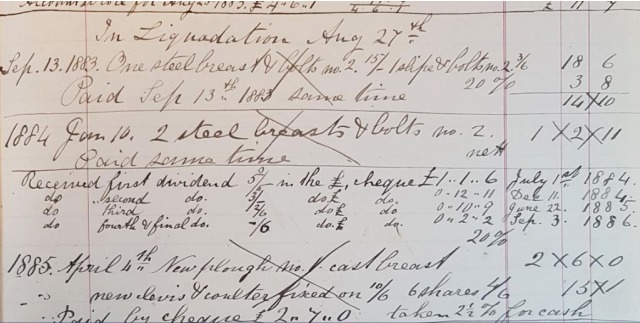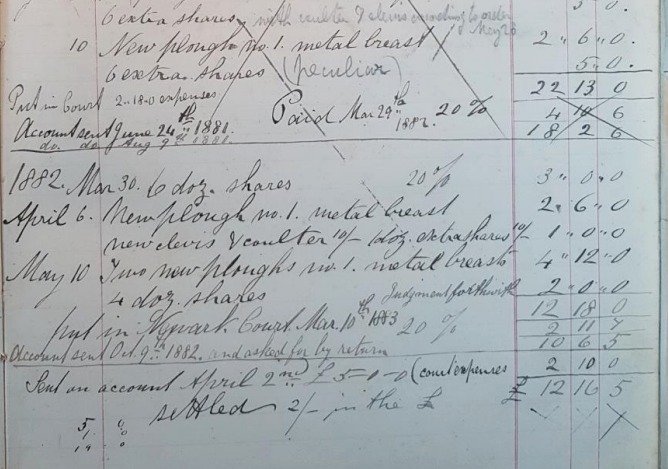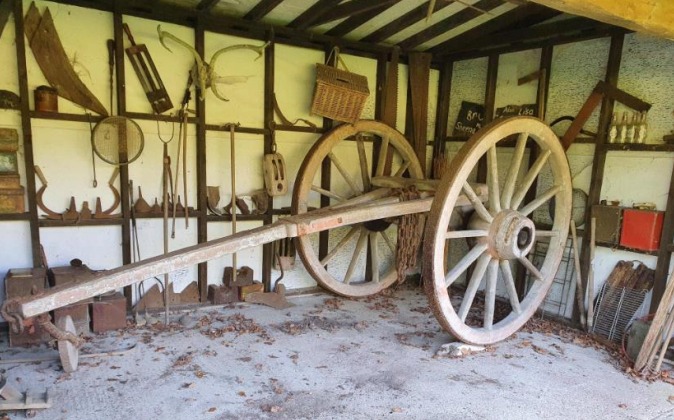Much more is shown such as payments being made by cheque and Post Office
Order, also there is a regular note of 2½% discount for cash.
There is a wealth of information here that would be worthy of analysis
at various levels by amateur and student historians, perhaps even for a
Master’s dissertation or similar. These books would also be of use for
local, family and agricultural historians and those searching for
individuals. Dr Dennis Mills used a Bealby Account book for an Open
University module on Historical Geography in 1983 (unfortunately the
book 1871 to 1882 that he used, although it is referenced to
Lincolnshire Archives and the Bealby family, is missing).
The data that we have concerning the business is incomplete as there are
often notes that carriage has been paid, but thus far no carriage costs
are consistently obvious, neither are costs such as raw materials and
salaries &c.. I would have thought that details of expenditure would
have been kept somewhere as between 1871 and 1873 this business was a
partnership between two brothers, James and Benjamin. So, what we have
appear to be a partially complete set of customer focussed ‘working
documents’.
The documents that we do have exist as individual jpeg files sorted in
the order that they occurred in the original books. They amount to some
2,000 images, totalling some 8gb in size. Being hand written by various
hands they are not electronically searchable. Those books, from which
some of these images originate, that remain in our archives are too
fragile to be handled.
If you are interested in accessing these files for analysis please
contact Jeremy Lodge through our web page at
http://collingham-history.org.uk/contact-us/ All that we ask is to be
fully credited in your references and for a copy of the results of your
analysis and reports that we can place in our archives and for
permission to publish abstract of your findings in our journal The
Irregular.
Or perhaps, you may have something thing that would supplement our
knowledge of this business, plough making and other rural crafts?
The business premises which George Bealby built in 1858 remain within
the family and are currently the home of Collingham’s Cat Asylum
Brewery.
Adjoining South Collingham was also the home of a successful plough
making business which belonged to George Moss. Unfortunately, although
the site of his premises was recently redeveloped, we know very little
of George and his ploughs.






